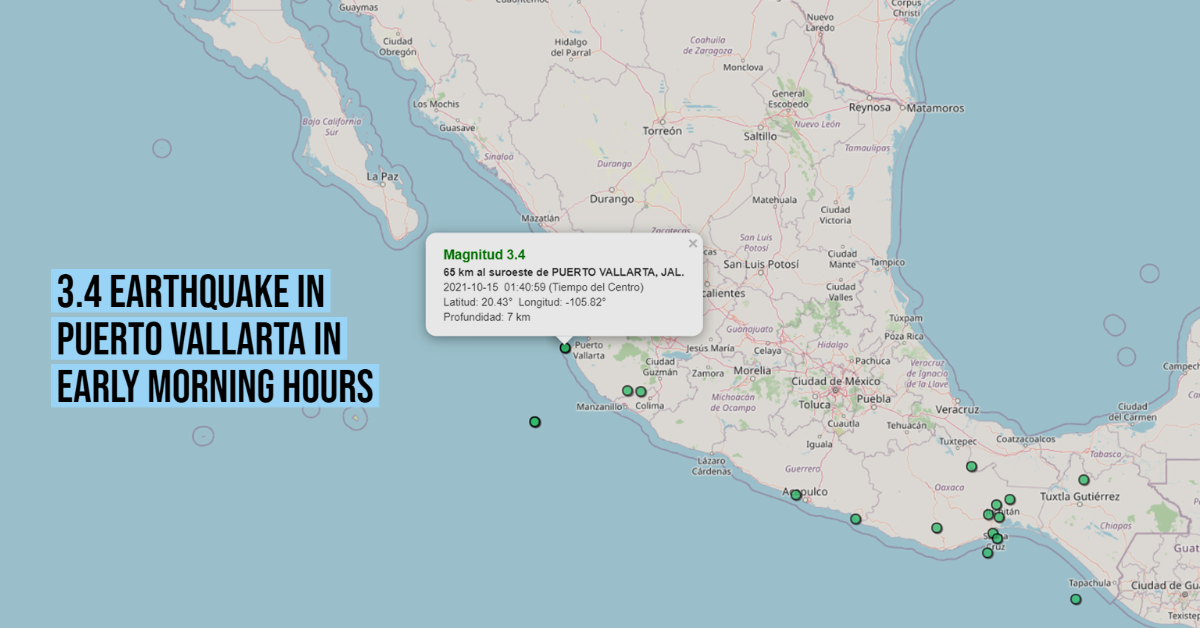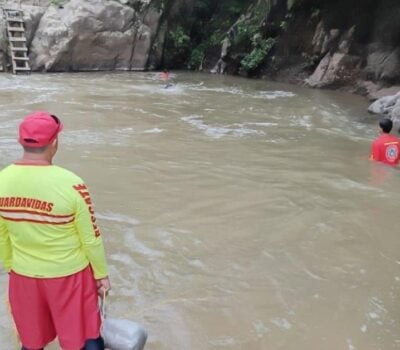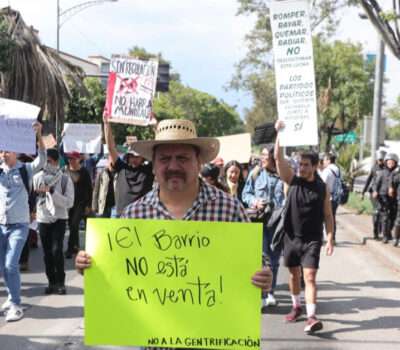A very light earthquake, 3.4 degrees on the Richter scale, was recorded in Puerto Vallarta. The episode took place at 1:40 am, with an epicenter 65 km southwest of the town and a depth of 7 kilometers.
A 3.4 earthquake would normally not cause damage or be perceived by most people within the quake area.
The most recent and memorable earthquake in Puerto Vallarta occurred on October 9, 1995, at 9:35 a.m., a magnitude 8 earthquake originated 10 kilometers (km) southeast of Manzanillo with a depth of 25 km, off the coast of Colima. The earthquake caused damage in Tepic, Jala, Ahuacatlán, Xalisco and Amatlán; in the state of Nayarit. In Jalisco, Guadalajara, Puerto Vallarta, Barra de Navidad, Zocoalco, Tolimán and Cihuatlán were damaged; mainly. While in Colima the most affected was the port of Manzanillo. The death of 58 people and more than 45,000 victims were reported, in addition to damage to the infrastructure.
The earthquake caused the collapse of the Crown of the Church of Guadalupe and later cause the demolition of the Vidafel hotel.
The earthquake was followed by a tsunami or tidal wave that affected the coasts of Jalisco and Colima along 120 km of Pacific coasts, from Tenacatita Bay in Jalisco to Manzanillo in Colima.
Mexico stands out as one of the North American countries with the most seismic activity. In recent memory, the events of 1985 and 2017 stand out above all, movements that caused devastation in their territory. Despite being the most remembered, they were not the largest since modern times.
On March 28, 1787, the strongest earthquake recorded in the country occurred. Oaxaca, then the central point of the Spanish colony, was the victim of a movement of 8.6 on the Richter scale. That event was so impetuous that it was followed by a tsunami that reached 6 kilometers inland.
The Center for Instrumentation and Seismic Registration (Cires) estimates a high possibility that the country will face a similar situation in the near future. In the studies carried out in 2009 to analyze the aforementioned event, it was concluded that earthquakes of a similar magnitude may develop in the area located between the coasts of Mexico and Central America. There, in the so-called Brecha de Guerrero, there is great geological potential to cause catastrophes of such proportions.
However, seismic events of lower magnitudes can also cause great destruction. During 1985 and 2017, Mexicans watched with amazement as the country's capital was plunged into chaos due to two earthquakes of less intensity than that of 1787.
On September 19, 1985, there was an earthquake of magnitude 8.2 on the Richter scale, with its epicenter in the state of Guerrero. It was 07:19 local time (13:19 GMT) and an estimated 10,000 people were killed. At that time, it was thought that there would be no more earthquakes of such intensity, but another earthquake occurred on the exact same day 32 years later.
In 2017, it happened at 1:14 p.m. local time (18:30 GMT), also on September 19, with its epicenter in an area between the states of Puebla and Morelos. So, the fatalities reached 369 people.












